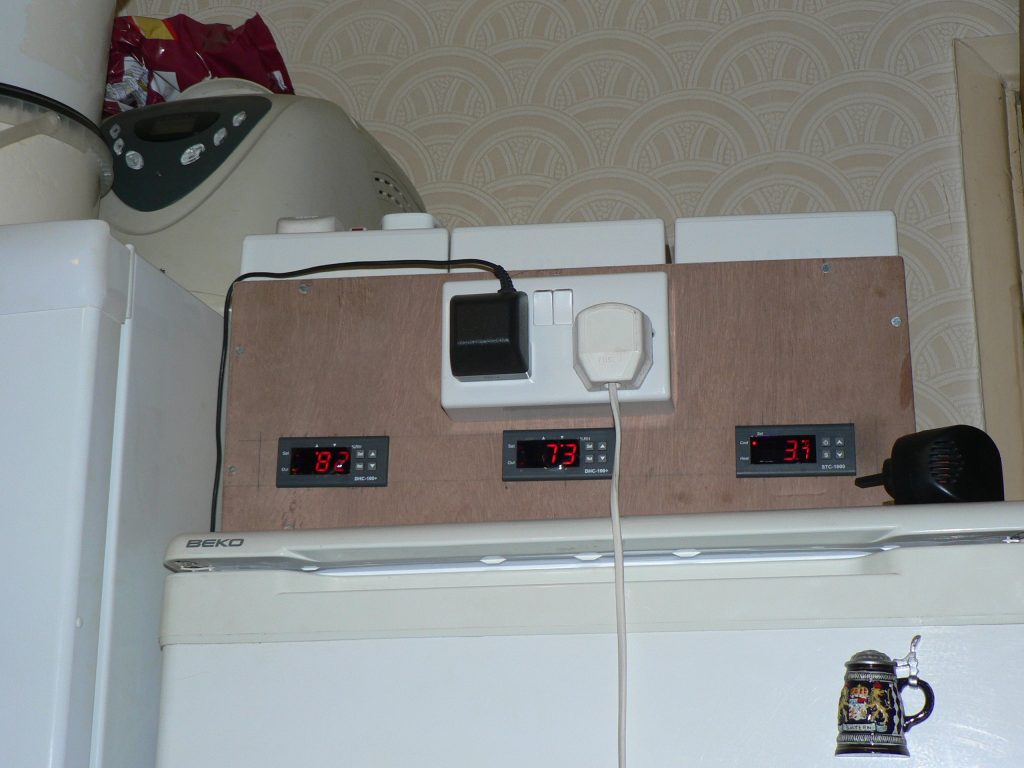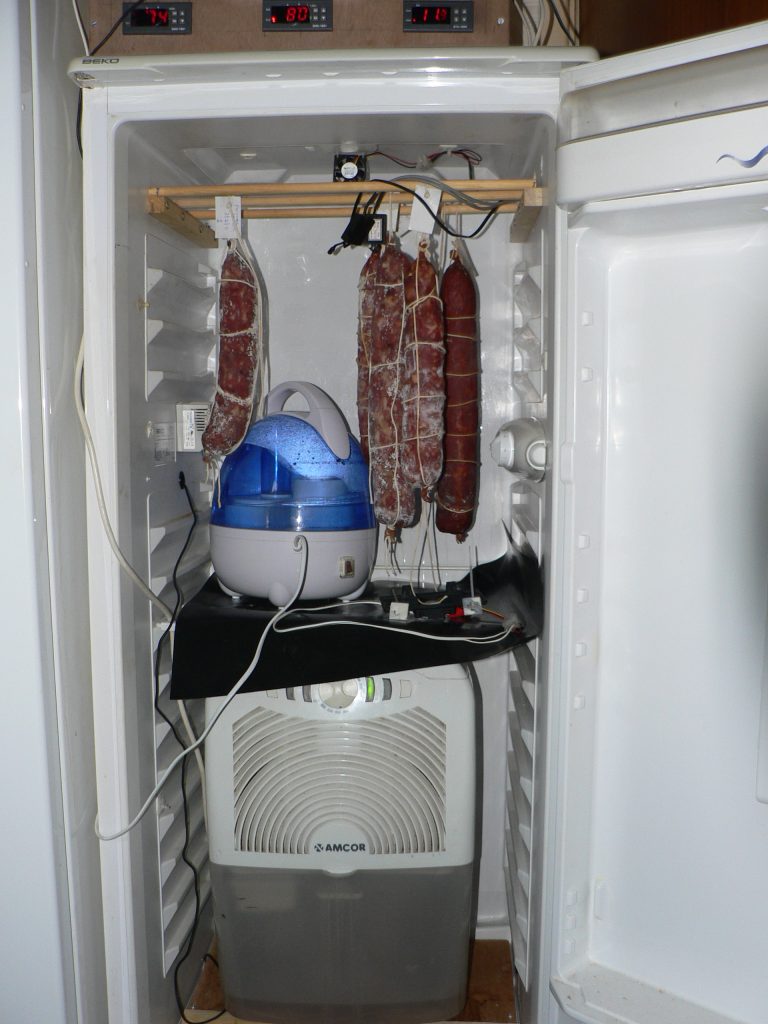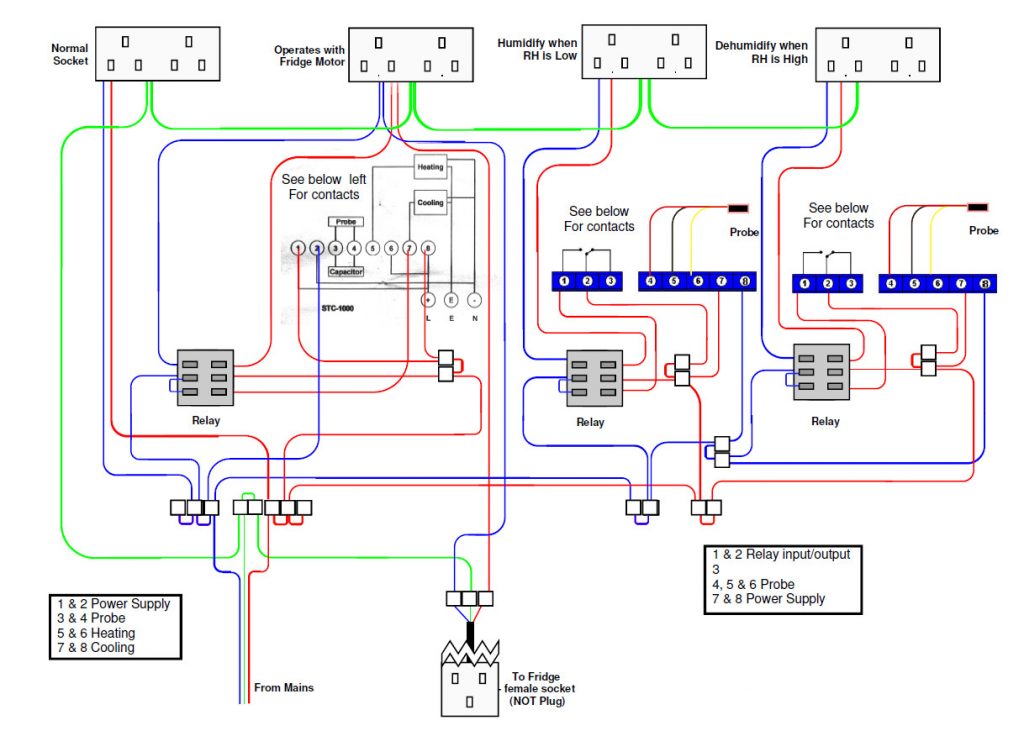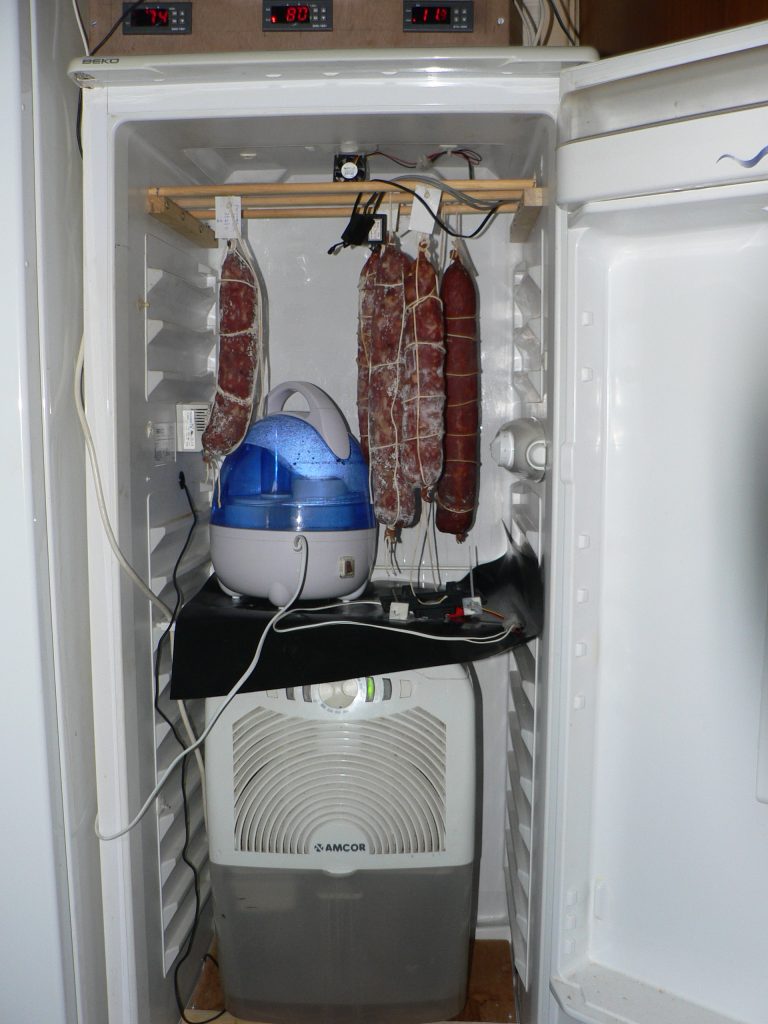On my old blog, I had a tutorial about converting a fridge into an air-drying chamber. There were pages on temperature control and humidity and a whole lot about wiring the different controllers.
Fortunately, time moves on and bespoke controllers are now available and are relatively cheap. No more sourcing relays, making control boxes and wiring it all up.
These pictures give a flavour of how it was:



You can now buy a couple of plug and play controllers to do all of this.
The type most commonly used are made by Inkbird and are in the £25 – £40 price range. You’ll need one for temperature and may need one for humidity. It’s worth doing a trial run with a low-cost quick-drying product such as snack sticks to test if you do.
Temperature
To control the temperature just plug the fridge into the thermostat. The thermostat will control the fridge by turning the power on and off so the fridge’s internal temperature control is best set to its maximum.
Humidity
The humidity controller needs to control two things: the humidity can be too high, or it can be too low. Low humidity can be controlled by placing an ultrasonic humidifier inside the fridge and connecting it to the Inkbird controller. High humidity is more problematic and numerous things have been tried in the past including a dehumidifier in the fridge:

The photo above shows how desperate I’d become! A smaller dehumidifier may look to be a good option but most are Peltier type products that don’t really work well under 15°C. The best solution I’ve found was suggested by a member of the sausage-making forum. It is to install a small tubular heater in the fridge. It works on the basis that if the humidity is too high the heater is activated which in turn heats the fridge causing the fridge motor to turn on and cool things down. When the fridge is running the plate in the back of the fridge gets cold causing water vapour to condense on it thereby reducing the humidity. I have to say that I was sceptical at first but it works beautifully.
Air-flow
Some people suggest that a fan should be placed in the fridge for airflow. In my experience, even the smallest fan running slowly on reduced power – a tiny 23mm computer fan in my case – can still cause problems. Opening the fridge door daily seems to do the trick.
…and lastly
Be very careful if you decide to make any holes in the fridge carcass for wires. Holes in the hinge side of the door are safest. Otherwise, try and find plans for your fridge online to ensure that you don’t hit any crucial parts. In most cases, the door seal will accommodate a wire.